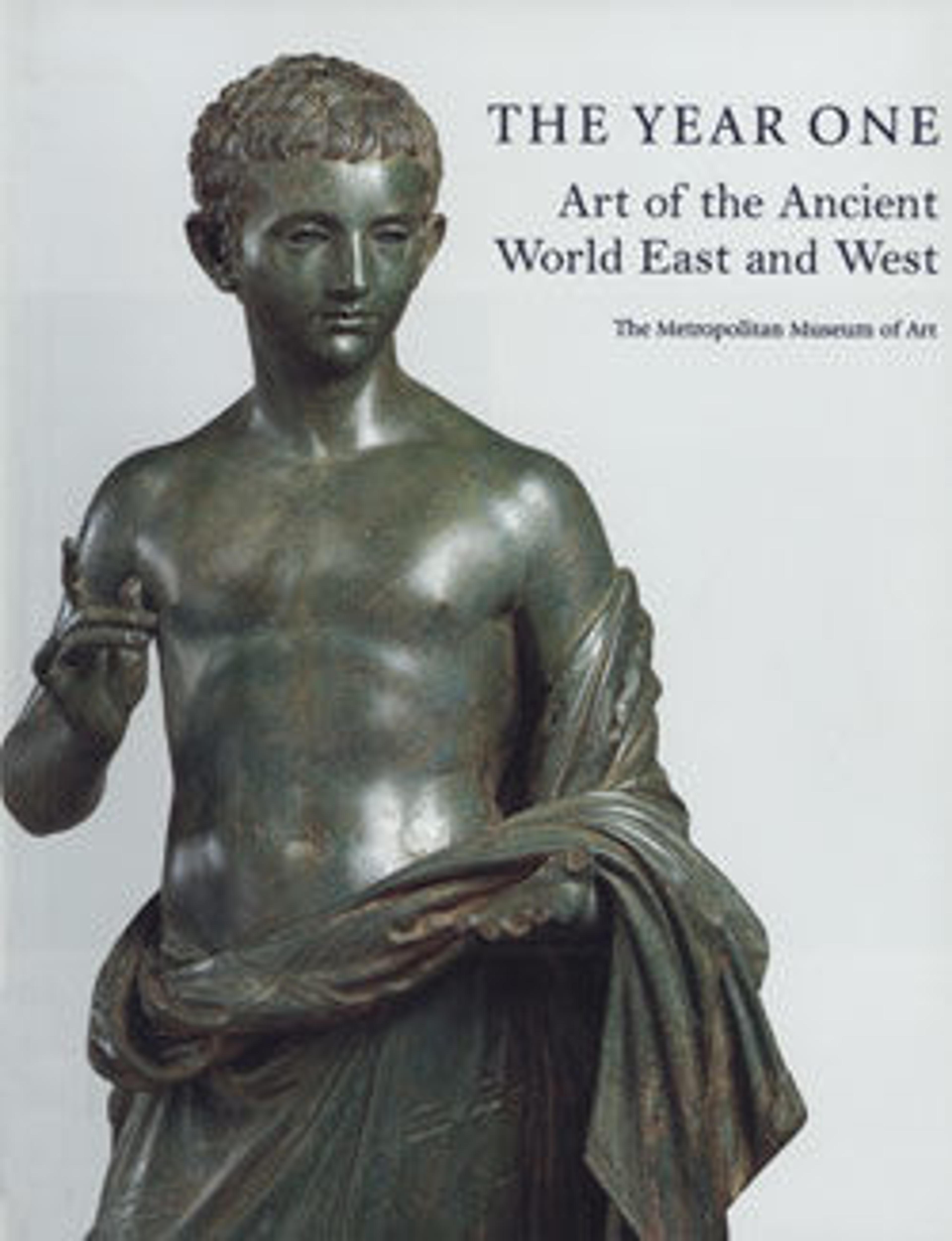Glass gold-band mosaic bottle
Translucent cobalt blue, turquoise green, opaque white, and colorless encasing shattered gold leaf.
Everted, horizontal rim with rounded underside to lip; cylindrical neck, with horizontal indent around base; globular body; slightly concave bottom.
Gold-band mosaic pattern formed from a single serpentine length of layered canes formed in the following order: green outlined in white, blue (appearing light blue in places when backed by white), colorless with gold leaf, and blue again; the length is wound three times round body, being fused together across bottom. A single fine horizontal line incised on upper surface of rim near outer edge; a band of three parallel horizontal grooves around upper body; another single horizontal groove on body at point of greatest diameter; and a band of two concentric grooves around outer edge of bottom.
Intact, except for one small chip in base of neck and some short internal cracks; slight dulling and pitting, small patches iridescence, and creamy brown weathering.
Rotary grinding marks on exterior.
Gold-band cast glass was a particularly opulent type of early Roman glassware. It combines canes of brightly colored translucent and opaque glass with strips of gold leaf encased between layers of colorless glass. Only a limited number of vessel shapes were made in this way, and some of the most common are small globular or carinated bottles such as these. They were presumably used to store expensive cosmetics and perfumes.
Everted, horizontal rim with rounded underside to lip; cylindrical neck, with horizontal indent around base; globular body; slightly concave bottom.
Gold-band mosaic pattern formed from a single serpentine length of layered canes formed in the following order: green outlined in white, blue (appearing light blue in places when backed by white), colorless with gold leaf, and blue again; the length is wound three times round body, being fused together across bottom. A single fine horizontal line incised on upper surface of rim near outer edge; a band of three parallel horizontal grooves around upper body; another single horizontal groove on body at point of greatest diameter; and a band of two concentric grooves around outer edge of bottom.
Intact, except for one small chip in base of neck and some short internal cracks; slight dulling and pitting, small patches iridescence, and creamy brown weathering.
Rotary grinding marks on exterior.
Gold-band cast glass was a particularly opulent type of early Roman glassware. It combines canes of brightly colored translucent and opaque glass with strips of gold leaf encased between layers of colorless glass. Only a limited number of vessel shapes were made in this way, and some of the most common are small globular or carinated bottles such as these. They were presumably used to store expensive cosmetics and perfumes.
Artwork Details
- Title: Glass gold-band mosaic bottle
- Period: Early Imperial, Julio-Claudian
- Date: 1st half of 1st century CE
- Culture: Roman
- Medium: Glass; cast and blown, and cut
- Dimensions: H. 4 1/8 in. (10.5 cm)
- Classification: Glass
- Credit Line: H.O. Havemeyer Collection, Bequest of Mrs. H.O. Havemeyer, 1929
- Object Number: 29.100.88
- Curatorial Department: Greek and Roman Art
More Artwork
Research Resources
The Met provides unparalleled resources for research and welcomes an international community of students and scholars. The Met's Open Access API is where creators and researchers can connect to the The Met collection. Open Access data and public domain images are available for unrestricted commercial and noncommercial use without permission or fee.
To request images under copyright and other restrictions, please use this Image Request form.
Feedback
We continue to research and examine historical and cultural context for objects in The Met collection. If you have comments or questions about this object record, please contact us using the form below. The Museum looks forward to receiving your comments.
